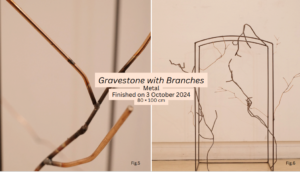
Background Research:Why Discuss “The Color of Death”?
In various cultures, colors have complex and profound connections with death. For instance, in traditional Chinese culture, white is often associated with funeral ceremonies and symbolizes mourning and death. While in the West, black typically represents mourning and the end. These differences in color symbolism reflect the unique understandings of death in different cultures. Through this exhibition titled “The Color of Death”, I aim to explore these cultural differences and invite viewers to reflect and understand the symbolic meanings of death in different cultural contexts.
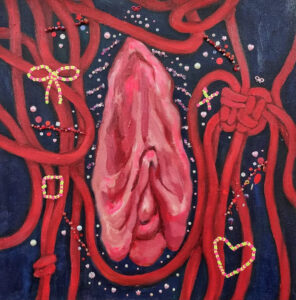

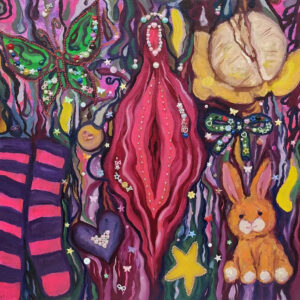
The exhibition details have been refined.
Exhibiting artists and their works:
1. Ju Keiyi: A student majoring in Contemporary Art Practice at the University of Edinburgh. Her work “Gravestone with Branches” is a metal sculpture (80×100 cm), completed on October 3, 2024. This work explores the interwoven relationship between life and death through the image of a gravestone interwoven with metal branches.
2. San Zhang (Zhang Zixin): Born and raised in Madrid, she later went to study in the UK and lived in Scotland for about five years. She graduated from the University of Dundee with a first-class honors degree in Fine Arts and has worked as an exhibition assistant at the V&A Museum and DCA Gallery. She is a multidisciplinary artist who mainly engages in sculpture, painting and performance art creation. Her exhibited work “Birth love death, vagina pussy cunt” series (three pieces in total) uses materials such as oil painting, acrylic, beads and sequins to explore the relationship between the female life cycle and death.
3. Lu Yang: A Chinese new media artist, mainly creating video and installation works, focusing on the intersection of life and death, diseases and digital technology. Her work “Delusion Mandala” uses digital images to explore the themes of death and rebirth. Art Basel
4.Zhou Yi: A multimedia artist, her works integrate various forms such as film, digital animation, photography, and sculpture, exploring the boundaries between reality and illusion, life and death. Her work “1280 Towers” uses the image of towers to explore the relationship between humans and the universe, as well as the concept of infinity.(Wikipedia)
Exhibition budget:
Venue rental (2 weeks): £4,500
Exhibition Design and Technical Support: £3,000
Transport and Insurance for Artist’s Works: £2,500
VR and Projection Equipment Rental: £2,000
Advertising and printing materials: £1,500
Opening event and tea break: £800
Workshop materials and lecturer fees: £1,200
Volunteer subsidy: £500
Emergency Reserve Fund: £1,000
Total: £17,000
Activity and Interaction Forms
Workshop:
1.”Painting Workshop on the Color of Death”: Participants create using different colors to express their understanding of death.
2.”Memorial Fragrance” Scent-making Workshop: Learn to create scents with commemorative significance, integrating olfactory experience with personal memories.
Interactive Scenario:
Digital Tombstone Projection: Viewers can input the name of the deceased to generate a virtual tombstone projection, symbolizing the commemorative method in the digital age.
“Final Message” Interactive Wall: Audiences write messages to the deceased, creating a collective mourning space.
VR Cemetery Tour: Through virtual reality technology, viewers can roam around in various cultural background cemeteries and experience diverse funeral rituals.
Odor Device Experience: Through specific odors (such as incense burning, marigold, etc.), it evokes the sensory memories of death in the audience.
Design of promotional materials and consideration of audience needs:
When designing brochures, pamphlets and posters, the following factors will be taken into account:
Clear information: Provide exhibition guide maps, viewing flow lines and descriptions of works to facilitate audience understanding and navigation.
Barrier-free design: Take into account the needs of color-blind and visually impaired people, and use high-contrast colors and large-sized fonts.
Psychological comfort: For audiences with conditions such as autism and claustrophobia, provide quiet spaces and advance exhibition explanations to reduce possible discomfort.
Arrangements for the opening event:
Tea and snack service: Offer simple snacks to create a relaxed atmosphere.
Artists’ Discussion: Inviting participating artists to share their creative concepts and interact with the audience.
Interactive Experience Preview: Guide the audience to experience some interactive installations, stimulating their interest in participation.
Music performance: Invite musicians whose music aligns with the theme for live performances to deepen the atmosphere.
Multisensory Experience and Installation
Visual: Spatial zoning with colors as the theme, through strong contrasts and gentle transitions, expresses different cultural perceptions of emotions related to death, such as the symbolic combinations of white and black, red and gold, blue and gray. Projection devices and decorative elements help create a symbolic atmosphere.
Auditory: Different funeral music from various cultures and natural environmental sounds (such as wind sounds, heartbeat sounds, religious ritual chanting, etc.) are played within the space to enhance the immersive experience.
Scent perception: Establish “Scent Stations” and introduce scents related to death rituals such as Chinese incense burning, Mexican marigold, Tibetan incense, and sandalwood to evoke emotions and memories of the audience.
Tactile experience: In workshops and interactive scenarios, provide touchable materials (such as metal components, dried plant leaves, bone china fragments, etc.), enabling the audience to physically connect with the physical symbols of death through touch.
Participation: Interactive installations such as “Last Message Card”, “Digital Tombstone Wall”, and “VR Cemetery Experience” all emphasize the active input and interactive feedback from the audience.
The Relationship between Color and Death (Deepened Exploration):
Color is not merely a visual phenomenon; it also constitutes a carrier of cultural, psychological and philosophical significance. In the exhibition, I hope to present the relationship between color and death from the following perspectives:
Cultural Difference Dimension: In Western culture, black symbolizes death and sorrow, while in East Asian culture, white is the dominant color for mourning, indicating that death is not a synonym in different cultures. Through the arrangement of color ranges (such as the zoning in VR Cemetery: white for mourning, black for nihilism, red for the passionate end of life), the tension and fluidity between these cultural interpretations are revealed.
Psychological Symbol Dimension: Colors have a direct impact on the emotional state of the audience. Color psychology indicates that blue evokes a sense of tranquility, gray represents numbness, and purple may lead people to engage in self-reflection. The exhibition will use this theory to guide the design of spatial emotional atmosphere.
Philosophical Speculative Dimension: By borrowing Heidegger’s concept of “living towards death”, I hope to imply the temporariness of life and the inevitability of death through colors. Colors are no longer just symbols but become the mental path for the audience to re-experience death.
Re-exploration of Exhibition Name and Concept
Exhibition Name: Vanishing Existence
Core Concept: Utilizing color as a symbolic language, integrating Eastern philosophy (“Form is emptiness, emptiness is form”) and Western existentialist philosophy (such as Sartre and Heidegger), this exhibition constructs a death experience path that combines both sensory and spiritual aspects through multiple media such as actions, installations, scents, and sounds. The exhibition focuses on how humans confront death and how symbolic media can immortalize individual memories and emotions.
Summary
I further refined the structure, artist selection, budget allocation, exhibition flow, and multi-sensory interactive experience of the exhibition “Vanishing Existence”. Taking into account the audience’s psychology, cultural differences, and spatial limitations, I attempted to construct a curatorial practice that is both contemplative and experiential. This is not only an artistic exploration of death but also an emotional guidance and cultural communication centered on the audience.
References:
-
Barthes, Roland. Camera Lucida: Reflections on Photography. Translated by Richard Howard. New York: Hill and Wang, 1981.
-
Hallam, Elizabeth, and Jenny Hockey. Death, Memory and Material Culture. Oxford: Berg, 2001.
-
Arnold, Ken, and Danielle Olsen, eds. Medical Museion: Experiments in Exhibition. London: Wellcome Trust, 2011.
-
Santino, Jack. “Performative Commemoratives: Spontaneous Shrines and the Public Memorialization of Death.” In Death Studies, 30, no. 5 (2006): 386–409. https://doi.org/10.1080/07481180600614351
-
Munro, Andréa. “Rituals of Grief and Mourning in Contemporary Art.” Journal of Visual Culture, 18, no. 2 (2019): 153–170. https://doi.org/10.1177/1470412919852031
-
Csikszentmihalyi, Mihaly, and Eugene Rochberg-Halton. The Meaning of Things: Domestic Symbols and the Self. Cambridge: Cambridge University Press, 1981.
-
Macdonald, Sharon. Memorylands: Heritage and Identity in Europe Today. London: Routledge, 2013.
-
Tolia-Kelly, Divya P. “Materializing Post-Colonial Geographies: Examining the Textural Landscapes of Migration in the UK.” Geoforum 35, no. 6 (2004): 675–688. https://doi.org/10.1016/j.geoforum.2004.06.004
-
Greenblatt, Stephen. “Resonance and Wonder.” In Exhibiting Cultures: The Poetics and Politics of Museum Display, edited by Ivan Karp and Steven D. Lavine, 42–56. Washington, DC: Smithsonian Institution Press, 1991.
-
Bourriaud, Nicolas. Relational Aesthetics. Dijon: Les Presses du Réel, 2002.
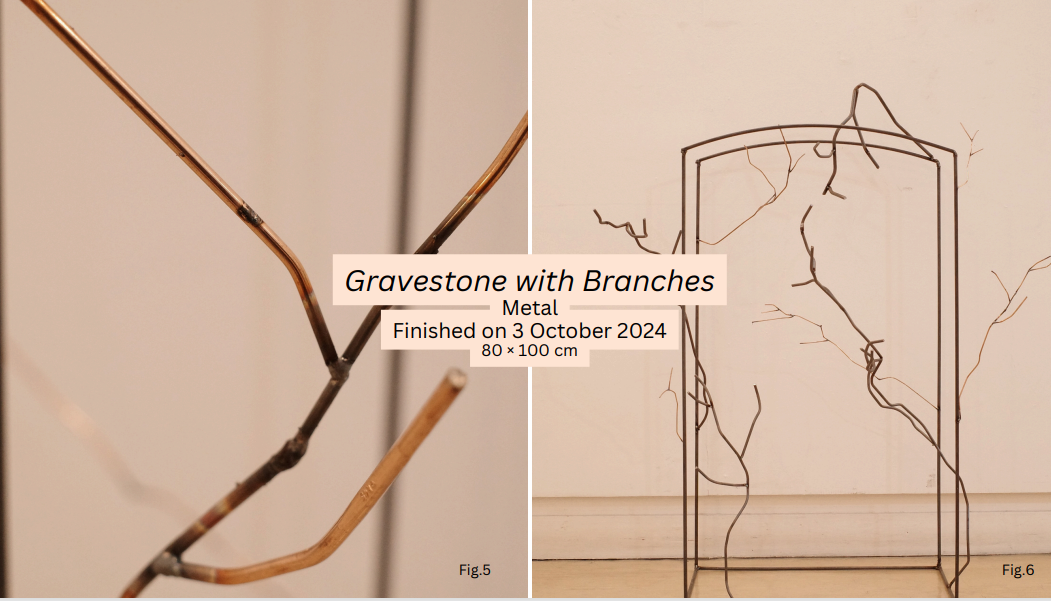

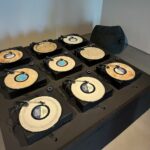


Julie Louise Bacon
3 April 2025 — 13:36
Overall, there is a sense of your project taking shape and your research process improving Haonan. There is some strong and thoughtful reflection in your field trip post, well done. You highlight “curatorial storytelling, spatial design, and audience engagement” and include rich summaries of all venues. You begin with a stream if images that have no captions, you must add these, and consider the most effective layout for images, inserted in sections? Use formatting as standard for things like sub-headings. Your conclusion is a perfect place to add the contextual research references I have emphasized so much, relating back to your thoughts on “curatorial storytelling, spatial design, and audience engagement”. You could also tie this in with Week 2 content, Week 10 on public programmes. The same is true of your post in Week 8 on the Collective, where you use sub-headings, numbers in a totally different way from the previous post: aim to create the visual consistency and identity of your blog as one whole Portfolio as I discussed in the Planning meeting yesterday. You do present the Collective meeting in a more useful way than simply outlining the process, by relating it to specifics of your project. Again, it is mostly practical and planning information rather than research-driven commentary: add references to curatorial texts, eg https://curatorialresearch.com/top-tips-in-curating/top-10-tips-for-curating-exhibitions-and-displays-lights-levels-and-labels/
In Week 9 you switch back to the format of Week 7, the stream of images, with no captions, varied sub-headings (eg now Final Thoughts, previously Conclusion). The set of points you make at the end are again the door to adding missing research and contextualisation, with material needed on methods of “Site-specific installations, Tactile and immersive elements, and storytelling through color”. The post Week 9 Collective meeting has repeat information in the purple block, this is too detached from the written section of the post, and headings are not clear. You should use the recommended table budget format not bullet points,and the maximum advised is 10,000£. While the Week 10 post has some good project development/planning content, the way you organise your information has the same issue as Week 9, how does the collective meeting relate to the SICP? There is a need not to just describe the Collective process but to critically evaluate this kind of discursive/collaborative process with resources, eg from Adam B/ week on Publishing where he discussed collective goals in detail: this relates to Learning outcome 2 and 3. The final post again has lots of information on both conceptual/creative work and practical/planning, but the headings and structure could be better arranged to group this type of content. All the sections on workshops, publishing need research to support them from the relevant weeks, and independent research of public programme/publishing/exhibition case studies and curatorial texts (about artists, curatorial methods) as well as potentially artist’s writings, to give this depth and more context in the field, which is highlighted in the learning outcomes